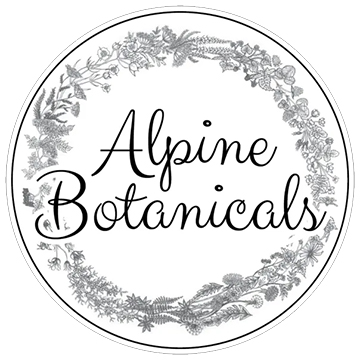Overlooked, undervalued and even criminalized – is that any way to treat such a soft, unassuming and generous plant? Mullein grows everywhere along the Peak to Peak: along highways, railroads and in everybody’s back yard. Mullein is officially classified as a noxious weed in Colorado, so mountain residents are getting out their torches and pitchforks to hunt down and uproot this prolific pest.
But there’s a quiet, powerful and healing side to almost every weed that we dig up and throw out. It seems I’ve garnered a reputation as a champion of the down-trodden and disrespected among our Front Range fauna – I can only hope the local dandelions, thistles and mullein plants feel somewhat more appreciated. Ironically, however, my passion for weeds has manifested some opportunities for weed-removal of the gentle, ethical and spiritual kind.
One person’s weed-removal service is an herbalist’s dream day-job. It’s an opportunity to wildcraft some of my favorite edible and medicinal herbs on a large scale. It’s a chance to be invited to some of the most beautiful views in our area – Magnolia, Big Springs, Ridge Road, Pactolus Lake – and to meet the happiest, cleanest and healthiest weeds in the world. Why does this matter? Because so much of our natural habitat is polluted with chemicals from highways and road maintenance. Even our rustic dirt roads get a thick coating of “dust control” on a regular basis making the nearby plants unusable for wild animals, insects and humans alike. However, many folks who enjoy an acre or more of pristine mountain living prefer to leave the land as they found it – wild and free, un-tampered with, naturally diverse and teeming with unimaginable abundance. Chemical and pesticide-free, wildcrafted edible and medicinal plants from the Colorado Rockies are actually a rare and precious resource.
While enjoying a sunny mullein-filled hillside with my gloves and trowel, I asked the mullein to talk to me, to tell me her story. As usual, she was a bit shy. I started singing, I broke off a leaf as big as my palm and touched it to my cheek. Her large, soft leaves are better than the softest blanket against your skin. Her bright yellow flowers open your ears to ancient songs of wisdom and tales of long-forgotten knowledge. Our ancestors appreciated mullein for her absorbency when applied to open, bleeding wounds, and used as 100% bio-degradable back-country toilet paper.
Finally, after a few blissful hours of silently digging up huge mullein plants by the root, I heard a soft whisper: “ahem” she said. “Excuse me? Who said that?”
“Ahem…ahem…ahem…” she cleared her throat most contritely.
“Ohhhhhh….mullein! Is that you?”
“Uh-huh. Ahem…” a brief pause. “Aaaahhhh. Much better.”
“Mullein, what do you have to teach me? What do I have to learn?”
“Take a deep breath.” She said.
Mullein, besides the desirable quality of softness, is highly reputed for helping lung conditions of every kind. An infusion of mullein leaves, either fresh-picked or dried, can be taken regularly to heal chronic lung irritations and will act as a mild expectorant. When the lung complaints are hot and dry, mullein is there to cool and soften the airways, bringing deeply lodged mucus up and out and calming spasmodic coughs.
My favorite mullein blend includes sage and mint to inspire deeper breathing. Prepare a “Deep Breath” infusion by adding a heaping tablespoon of the blended herbs to one quart of cold water. Slowly bring to a boil. As soon as steam begins to rise, remove from heat. Stand over the steam and take many long, slow, deep breaths allowing the essential oils in the steam to clear and open the airways. Allow the herbs to steep for about an hour, strain and enjoy with a little honey (or Dandelion Blossom Syrup – yum!). Some herbalists recommend including milk (dairy or non-dairy as preferred) with an infusion of mullein to speed recovery from asthma, bronchitis and even tuberculosis.
Dried mullein leaves can be crushed and smoked to help alleviate “smokers-cough” and curb tobacco cravings. I also use mullein liberally in my herbal cough drops alongside locally sourced and organically grown spearmint and horehound. Mullein cough syrup is a tried-and-true folk remedy that our grandparents definitely used to soothe sore throats and heal a stubborn, dry, hacking cough.
If you must get rid of all those beautiful mullein plants that are crowding out other things in your yard or garden, consider calling your friendly neighborhood herbalist first. She will definitely know how to put every part to good use!















I have allowed the mullein plants to grow in my garden at work and I hope to dry and use the leaves and flowers. Great post!
Hi Jenny,
I am so glad you are enjoying the natural abundance of mother nature…we have so many resources growing right at our front door! Blessings to you and your garden, Arwen
Hi Jenny, thanks for your comment! Good luck with the mullein, let me know how it goes. Blessings, Arwen